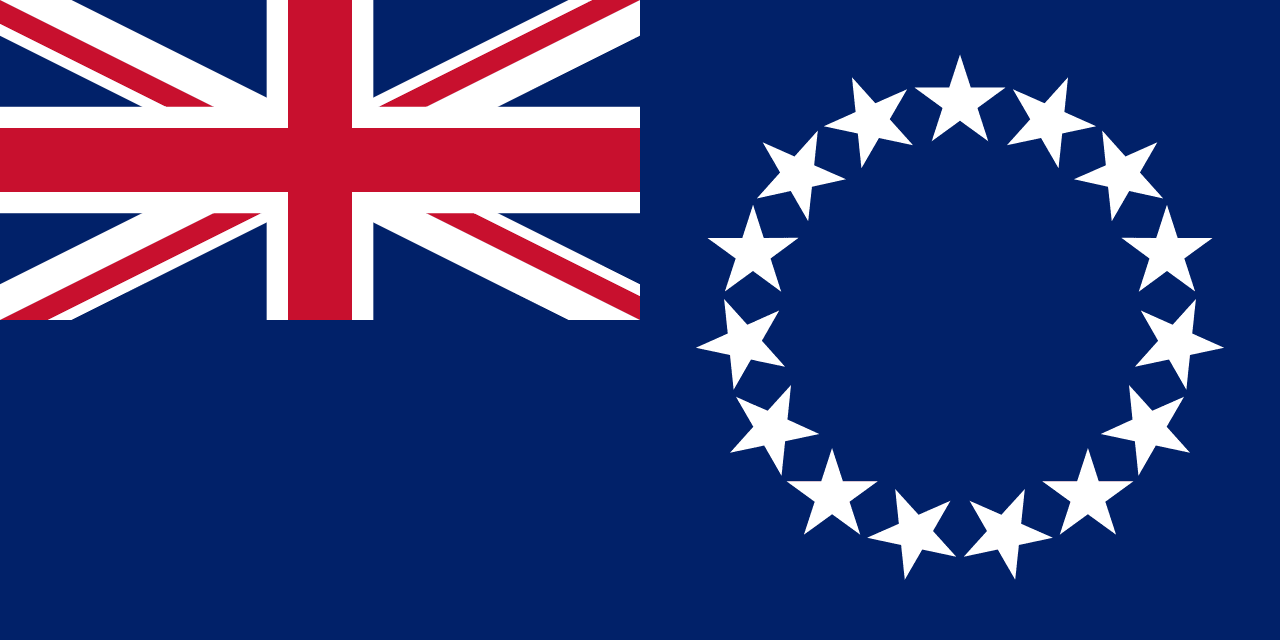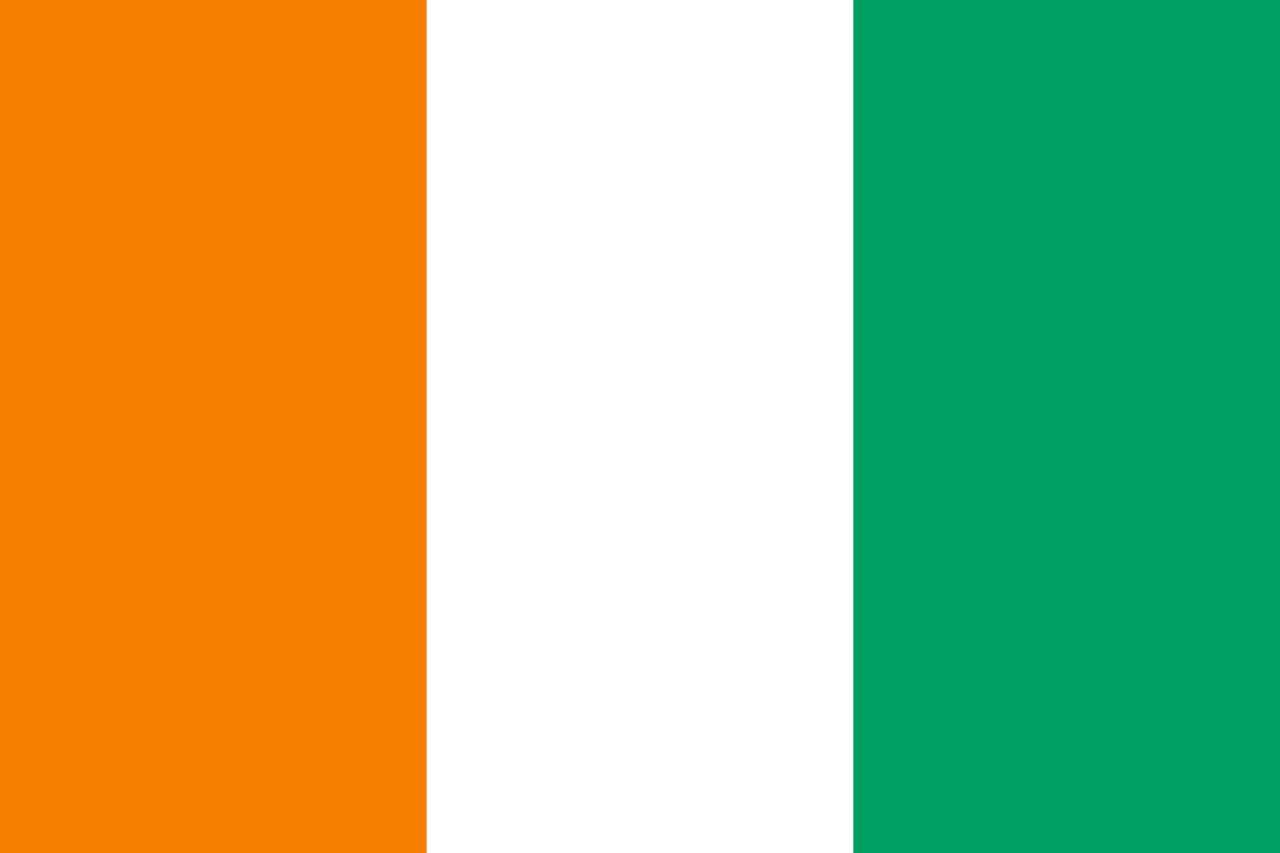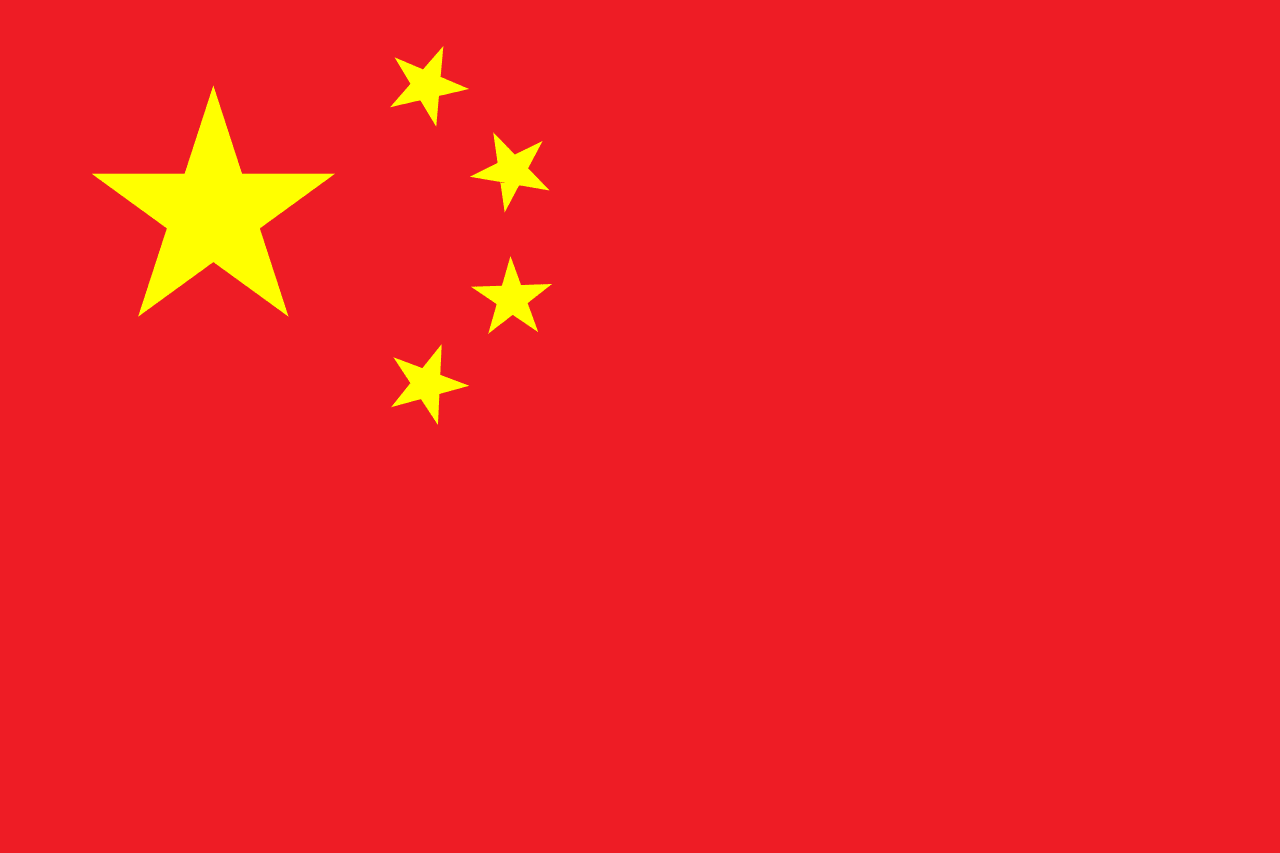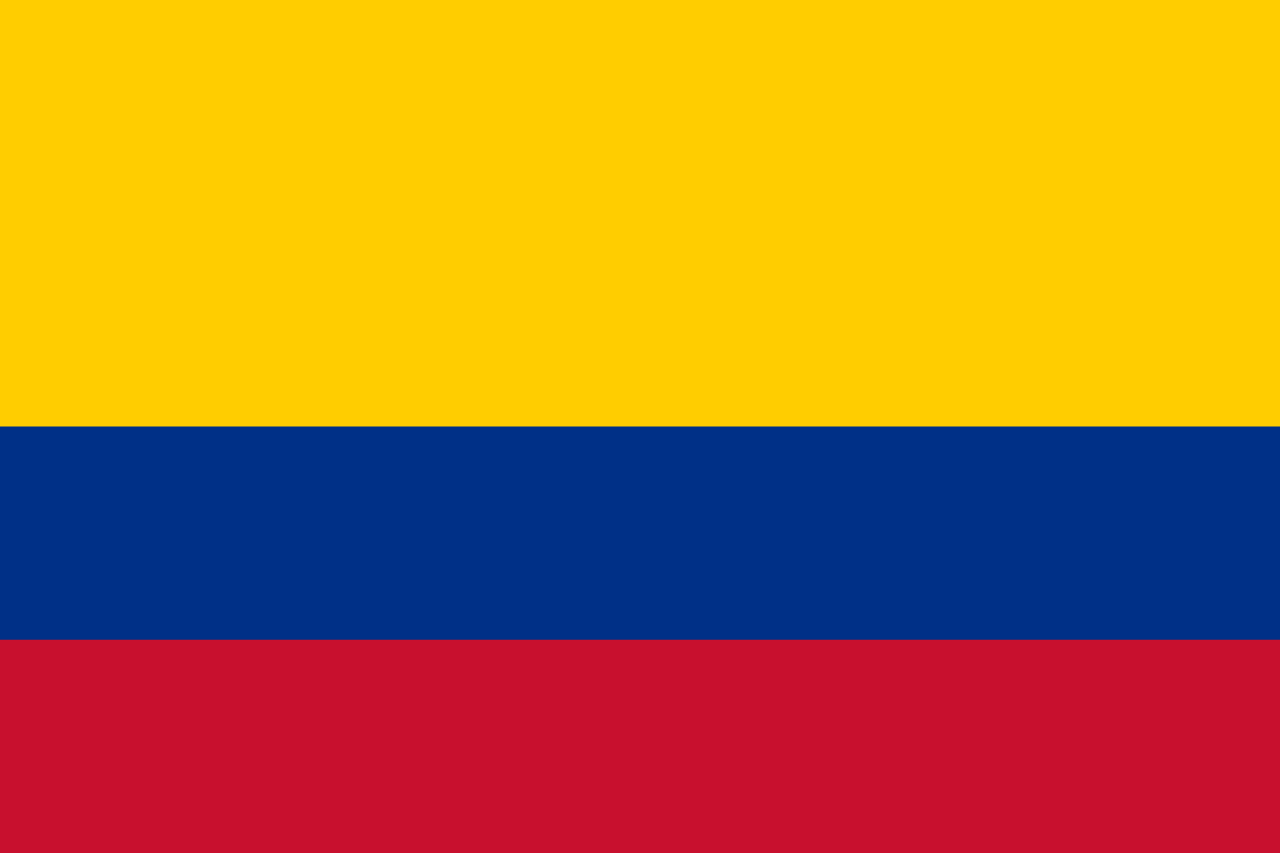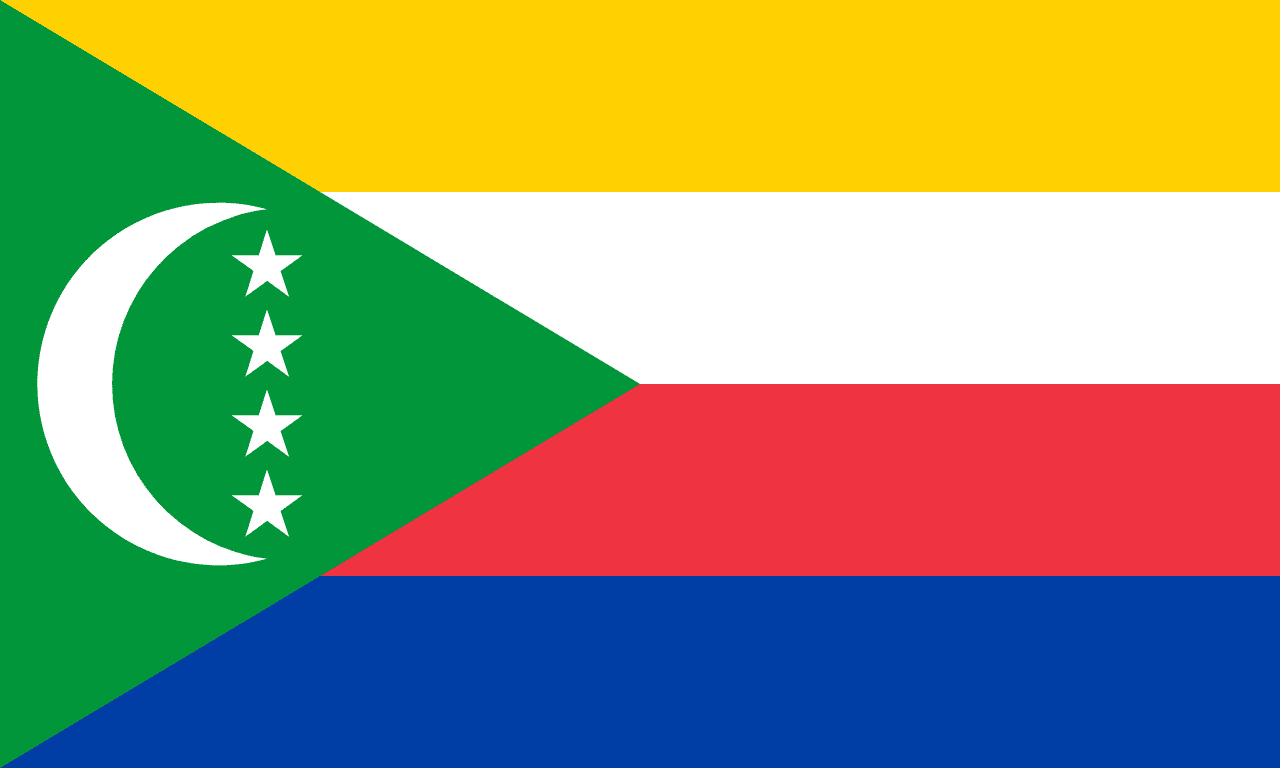The flag of the Republic of the Congo consists of a diagonal tricolor of green, yellow, and red, descending from the top left corner. This striking design represents the nation's values, natural resources, and historical struggles for independence.
Republic of the Congo information
| National Flag Day | — |
| Sovereign state | Yes |
| Official name | Republic of the Congo |
| Capital | Brazzaville |
| Population | 5,518,087 |
| Area | 342,000 km² |
| Currency | Central African CFA franc (XAF) |
| Language | French, Lingala, Kongo, Teke |
| Continent | Africa |
| Region | Central Africa |
| Subregion | Central African Economic and Monetary Community |
| Borders | Angola, Democratic Republic of the Congo, Central African Republic, Cameroon, Gabon |
| Timezone | West Africa Time (WAT) UTC+1 |
| Calling code | +242 |
| Top-level domain | .cg |
History of the Congolese Flag
 The current flag of the Republic of the Congo was officially adopted on September 15, 1959, just months before the country gained independence from France on August 15, 1960. The flag's design was influenced by the Pan-African colors and ideals, reflecting the country's aspirations for freedom and unity with other African nations.
The current flag of the Republic of the Congo was officially adopted on September 15, 1959, just months before the country gained independence from France on August 15, 1960. The flag's design was influenced by the Pan-African colors and ideals, reflecting the country's aspirations for freedom and unity with other African nations.
Since its adoption, the flag has remained unchanged, symbolizing continuity and stability in the nation's identity despite various political changes over the years.
Symbolism and Design of the Congolese Flag
The flag of the Republic of the Congo is a striking representation of the nation's values and history. Its diagonal tricolor design, consisting of green, yellow, and red, holds deep symbolism:
- Green: Symbolizes the lush forests and agriculture, highlighting the natural wealth and resources of the Congo. It represents hope and the country's commitment to sustainable development.
- Yellow: Represents friendship, nobility, and the bright future envisioned by the Congolese people. It also symbolizes the country's mineral wealth, particularly its oil reserves.
- Red: Signifies the struggle for independence and the sacrifices made by the people of the Congo in their quest for freedom. It also represents the vitality and courage of the Congolese people.
The diagonal arrangement of the colors is unique among national flags and adds to its distinctiveness. This design choice may symbolize the country's forward movement and progress.
Usage and Significance of the Congolese Flag
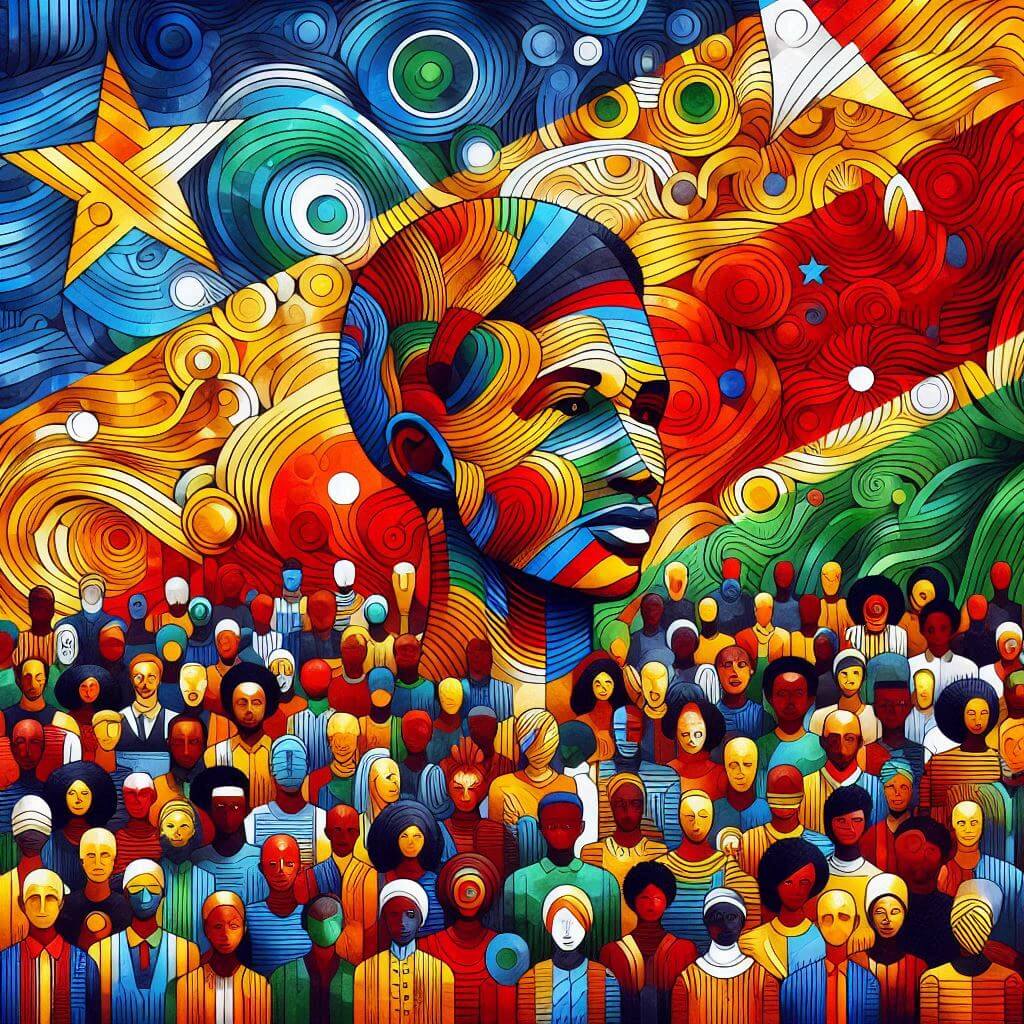 The flag of the Republic of the Congo serves as a powerful symbol of national identity and pride. It is prominently displayed in various contexts:
The flag of the Republic of the Congo serves as a powerful symbol of national identity and pride. It is prominently displayed in various contexts:
- Government buildings and official residences
- National celebrations, including Independence Day (August 15)
- International events and diplomatic missions
- Educational institutions and public spaces
- Sporting events where the Congo is represented
The flag unites Congolese people of all backgrounds under a common emblem, fostering a sense of national unity and shared identity.
Interesting Facts About the Congolese Flag
- The flag's design was influenced by the Pan-African colors, reflecting the Congo's solidarity with other African nations in their struggles for independence and self-determination.
- The simplicity of the flag's design underscores the nation's focus on unity and natural wealth, making it easily recognizable and reproducible.
- The flag has remained unchanged since its adoption in 1959, symbolizing continuity and national stability despite political changes over the decades.
- The Republic of the Congo's flag is often confused with that of the Democratic Republic of the Congo (formerly Zaire), which features a similar color scheme but with a different design and symbolism.
- In the language of international maritime signal flags, the Congolese flag pattern represents the letter "Y" (Yankee), which means "I am dragging my anchor."
